Griffith University comic: ‘Metaphors’
In late 2011 I got talking to Dr Nick Barter at a community fair. It was a chance meeting, and we began discussing shared interests relating to sustainability. He mentioned that he was a university lecturer and researcher. I mentioned that I was a cartoonist who focuses on sustainability-related stories. We agreed to collaborate on a future project.
By early 2012 this collaboration began fruiting as a graphic novel adaptation of one of Nick’s conference papers. Metaphors that facilitate Organisational Understanding is about the relatively abstract concept of ‘metaphors’, and how we can distort our view of the world, when inappropriately using metaphors to conceive the world around us.
A different way to convey ideas
One of Nick’s motivations was to use this ‘graphic novel’ to reach out to his students. He sensed that his students were bored by the idea of reading scholarly research. To them, academic papers seemed an almost-impenetrable ‘wall of text’. He hoped that a comic adaptation would allow readers to begin to understand the concept better, and would allow them to understand the original research paper. In this way, the comic may serve as a sort of Rosetta Stone for students to begin to decipher the wordy language of academic papers. Maybe some of them would decide to pursue a life of further research!
Collaborations using graphic novels seems to be an idea which Nick is fond of, as he has also published The Agony of the Lecturer (2012) and Is This OK? (2013), featuring strong use of illustrations. Those works express Nick’s frustration with ‘degree-factory’ university teaching, and the corporatisation and dehumanisation of daily life. He uses exaggeration and extrapolation to highlight the dangers of our current path.
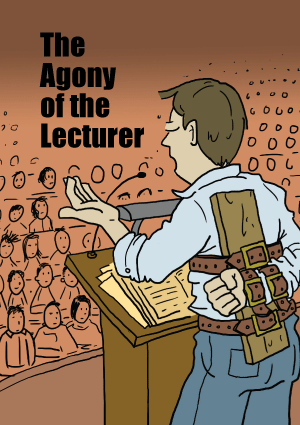
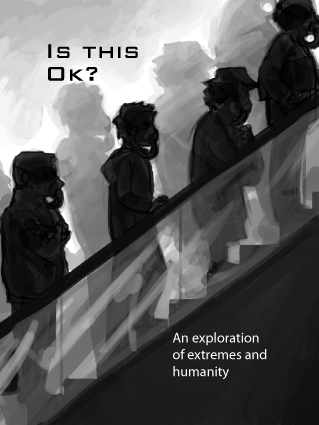
Adapting the paper into a comic
Nick encouraged me to take a strong lead in the comic adaptation. Essentially, he had made the first move by writing the research paper. It was now up to me to interpret his paper as an artist. I then brought my ideas to him, and together we worked to refine 2-3 versions of the script/storyboard into the finished comic.
A large challenge was deciding how to visually represent the concept of ‘metaphors’ in a comic. After all, most of the topics I draw comics about are about subjects which actually exist in three-dimensional reality. For example, ecological food webs, or stories based upon actual historical figures/events.
By contrast, Metaphors is based on a purely abstract/theoretical concept. It is based upon the ideas we use to imagine organisations, and the way we respond/react to organisations based on our understandings. This is very abstract stuff, and there are few obvious visual images to build a story upon. A lot of it relied upon my creativity.
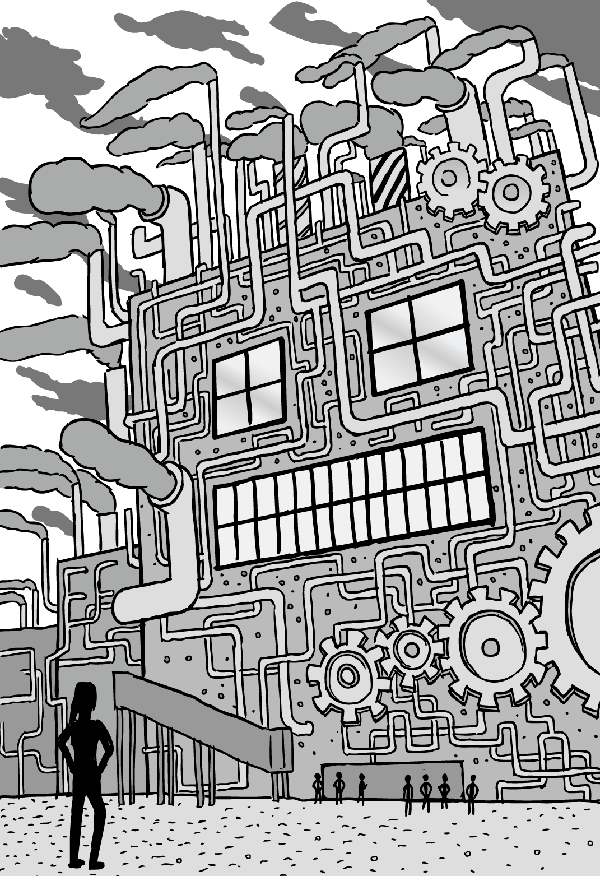
Choosing the imagery
I amplified the imagery of Metaphors to draw attention to certain aspects of this futuristic ‘parallel universe’. A world where all people seem to be wearing goggles/lenses (which are explained to represent the ‘metaphors’ those people use to view to world around them).
Showing the workers as literal ‘cogs’ in a machine, or organelles within a biological cell added to this effect. This visual transformation of people into shapes consistent with the metaphors they use to conceive their role within an organisation made it clear that this comic was set in a fantasy reality.
I made it clear that buildings/’organisations’ appeared to be organisms or machines purely in the eye of the beholder. This was shown through a ‘vision cone’ (e.g. page 6) which arose from the lenses the character was wearing (which itself was explained to be a representation of the metaphors the characters use to conceive the world around them).
Note that reader Tariq made some insightful comments about the conclusion of the comic. He suggested that a better ending to the comic would have been the characters replacing their bulky goggles for slimmer lenses. Metaphors are essential for us to think and act in this world, so reducing down to the slimmest possible lenses would have been a beter ending than the characters taking their lenses off completely.
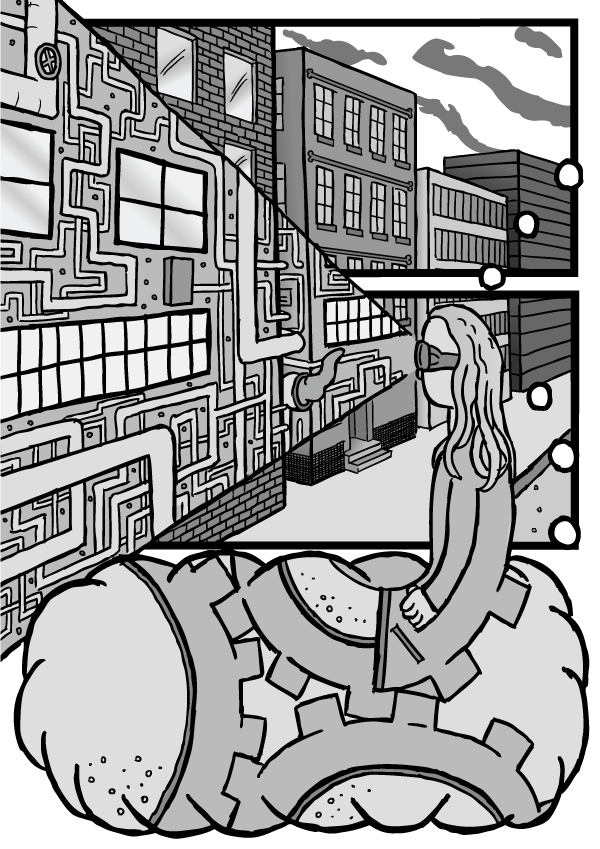
The message of Metaphors
An aim of Metaphors was ‘to make the ordinary seem strange’. To make readers reconsider their feelings towards organisations, and question if these feelings cause us to make bad choices.
In other words, to make readers reconsider the way we use ‘organism’ and ‘machine’ metaphors to conceive of organisations. I wanted to make the reader wonder if they act in ways that seem strange, once objectively pointed out to them. Does talking about an organisation being ‘alive’ (‘growing’/’evolving’/being ‘born’) cause us to subconsciously project human qualities onto the subject? Does that cause us to use unnecessary sympathy when discussing the role of organisms in our society/economy? Do we show them unnecessary concern? Do we avoid making decisions which ‘hurt’ these imaginary, non-existant entities?
Ditto the ‘machine’ metaphor. Is it worrying that we conceive organisations as somehow superior to its human constituents? Have we created unstoppable creations that humans are now unable to restrain?
I wanted readers to reconsider our relationships to organisations and think about the behaviour-modifying ‘forces’ these imaginary entities exert on us. As human beings, it is remarkable how much we modify our behaviour to avoid unsettling so-called ‘things’ which don’t actually exist!
Read the full comic Metaphors: The Lenses We Use to Interpret and Understand Our Reality by Nick Barter and Stuart McMillen.
Testimonial from Dr Nick Barter
Behind chance meetings there is often a large dose of serendipity that makes you wonder if you were meant to meet. Stuart and I did have a chance meeting at a community fair, one dark Friday night. From that initial meeting, I persuaded and perhaps cajoled Stuart to work with me. Working with him was a rewarding experience and the final product exceeded my expectations. I had never written a comic before and as such the I was tentative in the process. However Stuart held my metaphorical hand and made the process a good one. It was in sum a pleasure working with him and I would have liked to do more, but unfortunately he moved away. I hope our paths cross in the future.
— Nick Barter, Griffith Business School








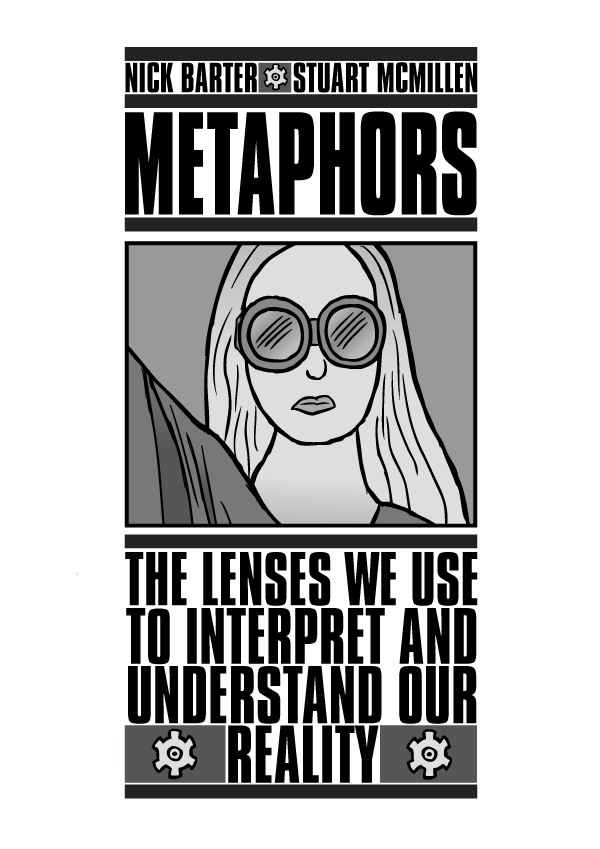
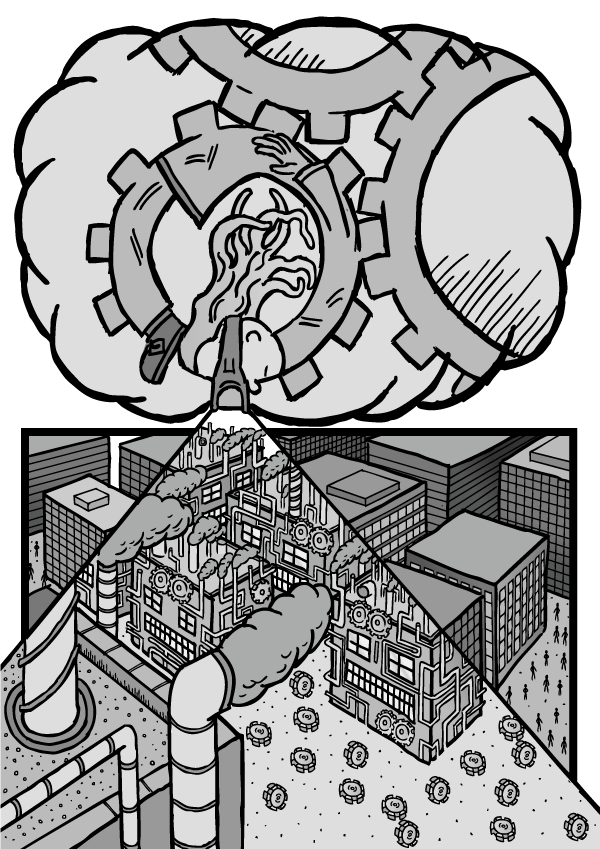
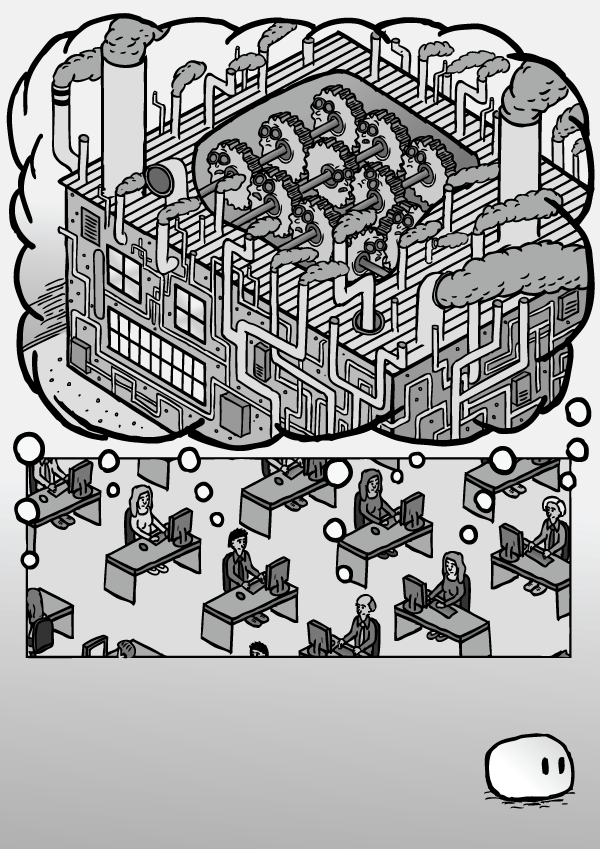
Comments